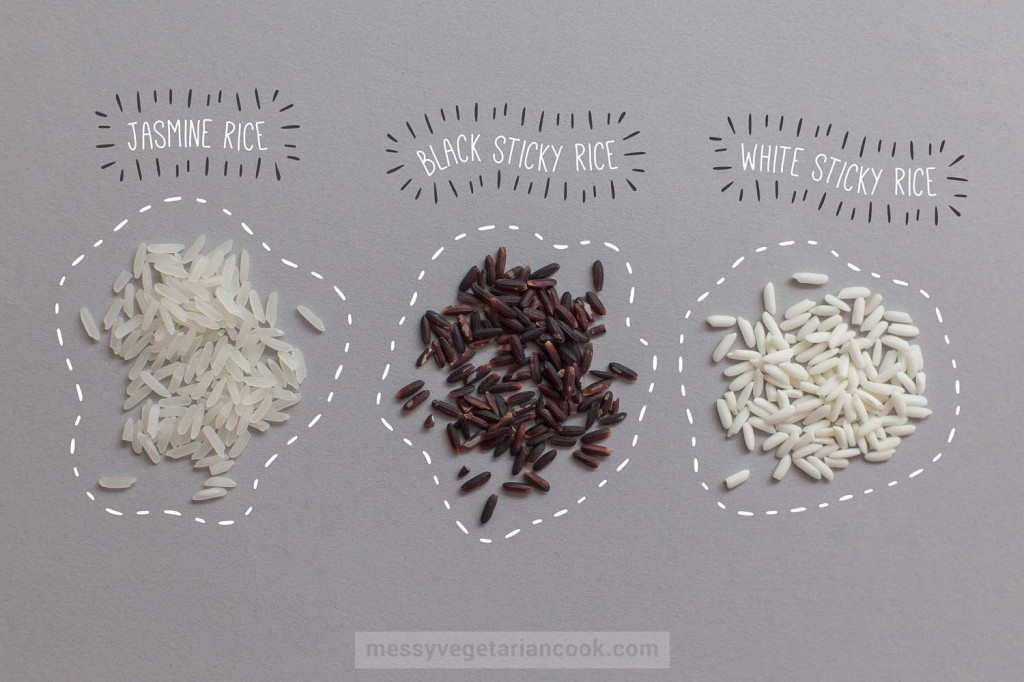A few years ago, wandering the streets of Siem Reap in Cambodia, I happened across a tiny rice paddy. Despite years of frequent travel to the region, this was my first up close and personal encounter with growing rice. A woman approached me, sharing stories of the trouble she was in as a child for snacking on indigestible raw rice from the paddies. She laughed, popped a grain into her mouth, and dropped one into my hand. Soft, sweet and starchy.

The Thai relationship with rice
Everybody in the region has a relationship with rice.
I disagree with the analogy that the Thai use of rice is akin to the role of bread in European culture. We love bread, we joke about the tragedy of a life without bread, we consume it with a fervour, but it doesn’t exist in our lives to the point that every meal would be impacted without it. On the Thai table rice is the centrepiece rather than an accompaniment, a grain that makes even the most complicated and refined dish a mere accessory. In fact the most Thai of meals, a spread of dishes alongside rice, is called aaharn gap khao, or food eaten with rice.
Thais might eat rice every day, multiple times a day. Rice is offered to deities and spirits, and given to monks during daily almsgiving. Rice is celebrated in festivals and utilised in customs. It is fundamental not just to Thai cuisine, but also to its culture.
From rice to riches, Thailand built its power base on this simple grain and is now the world’s fourth largest rice exporter – an estimated five million tonnes cross the country’s borders each year, while Thais consume the remaining fifteen million.
About rice and rice science
Rice (the seed of the plant) is a versatile amphibious plant, one humans have been consuming in cultivated form for at least 8,000 years (likely longer). Most of a grain of rice is starch, which is what characterises the difference between glutinous/sticky and long grain varieties.
All types of rice contain the starches amylose and amylopectin and and the proportions of these starches dictate where on the spectrum of sticky to dry a variety of rice falls. Long grain rices are higher in amylose and produce a drier texture when cooked than sticky rices, which are higher in amylopectin.
Generally speaking, starch granules in long grain rices (e.g. many Indian varieties) are much more stable and far better organised, which is why it takes so dang long for them to cook! The opposite is true with, say, sushi rice, which seems to be done in moments.
Types of Rice in Thailand
Rice consumption in Thailand can be mostly divided into two geographical regions. Sticky rice is the preference of the North, while the South and central regions tend toward fragrant jasmine rice (which unusually fits the description of long grain but its high amylopectin content renders it much stickier than other long grain varieties). Sticky rice is still consumed in the South, but mainly in the form of sticky mango rice or other sweet dishes.
While this post focuses on three types of rice there are in reality many more in Thailand, including sub varities of the trinary already mentioned. There are also brown and red rices are well as the ever popular riceberry.
Cooking rice
For jasmine rice, wash the grains in plenty of water before placing it in a pot. Cover with enough cold water to reach the first joint of your index finger when the point of the finger rests on the top of the rice. Do not add salt. Bring to the boil, cover, and cook over low heat for 10-15 minutes. Do not overcook and do not stir the rice during cooking.
Another way to cook jasmine rice is to boil it in plenty of water until it's nearly finished. Then turn off the heat, drain away the water, pop the lid back on the pot, and leave it to steam for a little while until done. This takes some skill but it's a very good method.
Before cooking sticky rice, it should be soaked for at least a few hours first (preferably overnight). Strain through muslin and place in a bamboo steamer (Thais use a conical shaped implement, but I find the tiered stackable steamers or metal steamers work fine). Steam over boiling water for 30-35 minutes. If you steam without the cloth, expect the rice to cook more quickly (20-25 minutes).
Black sticky rice will take substantially longer to cook. It isn’t unusual to take three hours for the grains to finish cooking. Boiled, you’re looking at a good hour of cooking time.